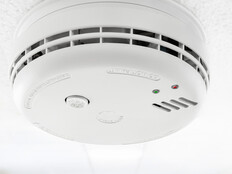Cyberbullying in Schools Is Evolving
As student access to the internet expands and more online learning tools come into use, there are increased opportunities for cyberbullying. Emerging technologies, such as artificial intelligence, take this to a new level.
Typically, cyberbullying includes “social media harassment, spreading rumors or sending some hurtful messages,” says Jennifer Duer, director of safety and wellness products at Lightspeed Systems.
With new tech tools, “cyberbullying is taking some different forms,” she says. “I just saw an example of a student using AI to create a hurtful song about another student. And studies say 1 in 10 students know someone who has used AI to create inappropriate photos of a classmate.”
Teachers, counselors and school leadership need to be proactive in this environment.
How Schools Can Stop Cyberbullying
A multilayered approach is needed to address the problem effectively and stop cyberbullying.
“You need ways to identify concerns. Then you need to have a system in place for how you assess the level of concern and what to do based on that assessment,” says Clements, who served as director of counseling services for Neosho School District in Missouri before her current role.
KEEP READING: Don’t lose valuable IT knowledge amid staff turnover.
Many schools only have partial systems in place. They may have plans for responding to concerns, “but they don’t have a robust system to identify those concerns,” she adds.
Bullies are sneaky. They may type a mean message into a search bar, show it to a victim, then delete it. Or they may exploit digital learning tools, posting negative words in Google Docs and then deleting them.
“You can only address the concerns that you’re aware of,” Clements says.
That’s where technology can play a significant supporting role.
How Technology Can Defend Against Cyberbullying
There are educational technology tools available that help schools monitor for these behaviors.
In the Neosho School District, Clements used GoGuardian Beacon. “It gave us eyes into those situations that we wouldn’t normally see,” she says. Beacon lives in the background of a student’s school-owned device, “and it monitors everything at the browser level. Whatever they’re doing in their browser, Beacon is going to be able to see.”












